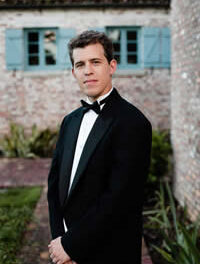UNCW Presents is a cultural arm on the UNC Wilmington campus which presents an intriguing variety of music, dance, and other events. This concert was a performance by the Cooperstown Quartet. The group appeared as part of the Four Seasons Chamber Music Festival which is headquartered at East Carolina University and directed by Ara Gregorian, one of the members of the Cooperstown Quartet. The festival is a movable feast, in that the group doesn’t only perform at its home base – the typical situation of a festival – but travels extensively in North Carolina and sometimes beyond.
The Cooperstown Quartet includes some of the finest musicians on the stage today, who have performed widely in the United States and abroad as chamber players and soloists. The members are Gregorian and Hye-Jin Kim, who switch positions of first and second violin; Maria Lambros, viola, and Michael Kannen, cello. In addition to their high-level performing careers, all hold prestigious teaching positions, at Eastern Carolina University and the Peabody Conservatory. After a great deal of collective experience, the group recently came together formally as the Cooperstown Quartet.
So it was with significant anticipation that one greeted the start of this concert. The first piece was the Quartet in E-Flat, Op. 12 by Felix Mendelssohn. Mendelssohn was a prodigy, the composer who gave the world his Octet and the Midsummer Night’s Dream Overture before he was 18. This quartet, written when the composer was barely past 20, shows the young master in full flower of lyrical invention and formal perfection.
The Cooperstown Quartet is a consummate instrument. Balance and intonation are immaculate. Their technical finesse is of the highest order, and one could admire this at nearly every turn. These are players with an obvious intimate rapport, and they make great chamber music together.
Yet the performance of the work did not fully match the high expectations. The first movement opened with beautiful lyrical tone, but did not develop any real momentum, despite the allegro tempo marking. The second movement had an appealing jaunty quality, a nice scurrying quality in the middle section, and a fine return to the A. In the third movement there was beautiful long-lined tone and perfect unison playing. The last movement lacked the headlong quality it should have. One felt that tempi were restrained, and almost a reluctance to sustain forte. The playing would reach that level for a moment and then seem to pull away. The work as a whole was played with beauty but also rather a dearth of contrast and power. One wondered whether the somewhat unfavorable acoustics of Kenan Auditorium played a role.
The next piece was the great Quartet in D minor, Op. 76 No. 2 by Haydn. This started with a promising element of dynamism, but then retreated to qualities similar to what one had experienced in the Mendelssohn. The last movement left the best impression. It developed some momentum, and the six-note motive was played with precision.
After intermission, things changed. The second half of the program consisted of a single work, and hearing it was like listening to a transformed quartet. All of the drawbacks mentioned above disappeared, and all the qualities of a world-class ensemble shone forth. The single work was the Quartet in F, Op. 59 No.1 by Beethoven. At almost 45 minutes, this is a long and elaborate piece. Yet it projected as a unified and cohesive whole which gripped the listener from start to finish.
One could imagine that the ensemble had now fully adjusted to the acoustics of the hall. But there was also a shift in personnel, as Gregorian took over the first violin part. The passion which characterized his spoken comments about the music now seemed to infuse the quartet as a whole. Climaxes developed real strength, motives interchanged with the finest clarity, and moods evolved in a continuing arc. There were gripping softs, jocular fun, and sensual intertwining lines. The pizzicato coloration was beautiful, as was the hush before the very end. This was a performance to remember, as close to the ideal of Beethoven as we are likely to experience.
***
edited 3/3/17











